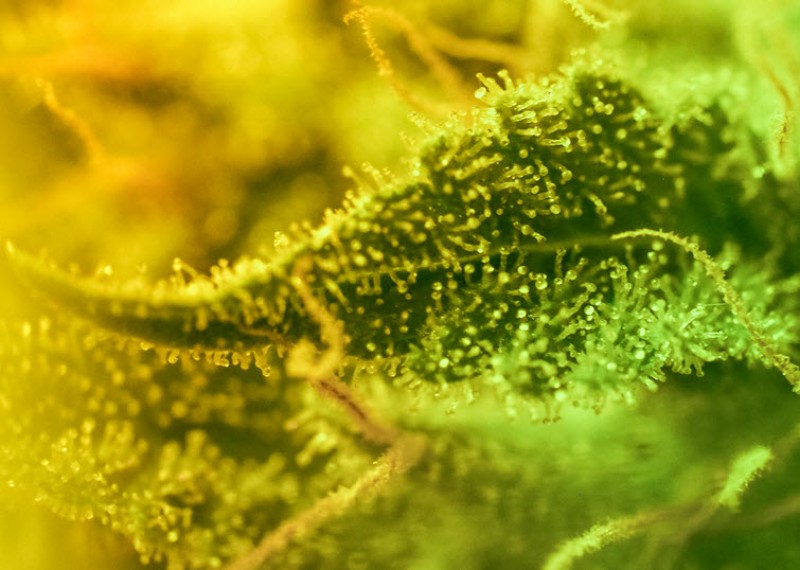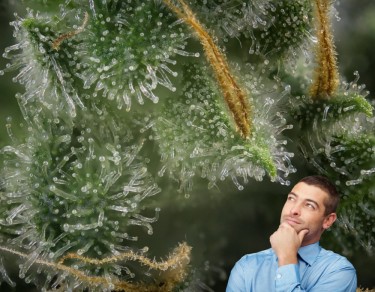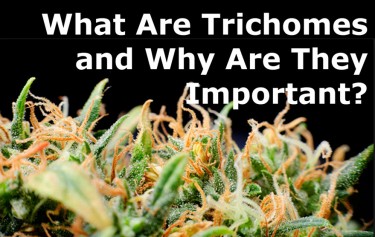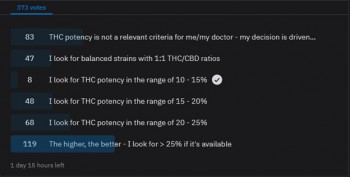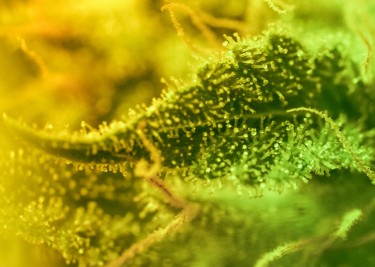
Are you prepared to take your cannabis plants to the next level? An effective way to do this is to maximize the trichome production of your crop to yield an improved level of terpenes and cannabinoids.
What are trichomes?
Trichomes are the true essence of cannabis plants. They contain the essential compounds in the cannabis buds: terpenes and cannabinoids. This means that, without them, cannabis products will be tasteless and have little or no therapeutic and psychoactive benefits.
A quick look at a cannabis bud under a microscope will show you thousands of mushroom-like structures extending from the surface of the buds. Trichomes were nicknamed "mushrooms" due to their bulbous tips. The terpenes and cannabinoids of the cannabis plants are housed within these bulbous tips. Trichomes are important to the survival of cannabis plants as they serve as barriers against pests and pathogens.
Scientists have discovered that the best way to boost or substantially improve the production of trichomes is by leveraging their protective nature. This cannot be done in a day or a week; it is a continuous process that begins during the vegetative phases of the plant. Growers make simple changes to the plant as it develops into a mature plant to help it attain its full trichome potential.
Stress is important.
The weird aspect of boosting trichome production is that it induces stress in the plant. Stress is a highly vital principle that triggers the production of more trichomes.
This type of stress has been described as "good stress." In the process of boosting trichome production, care must be taken to ensure that the plant's wellbeing is not endangered. Bad stress could limit the plant's growth and, in extreme cases, result in fatalities.
Inducing this good stress in the plant is a way of stimulating the plant's biological defense. This way, the plant produces more trichomes to fight the danger, resulting in increased cannabinoid and terpene production. Experienced growers have learned to subject these plants to controlled stressful conditions. This is usually done during the vegetative through the flowering phase. This gentle infliction of stress ensures the plant's self-defense mechanism is activated on time.
The Process of Boosting Trichome Production
Stress is inflicted on the plants in the vegetative phase. Although the young plants are still too young to produce trichomes, the imposed stress helps the plant build up a good structure and stability to withstand future pressure. The pressure at this stage is more or less to make the plant stronger.
Stress-Training
There are two techniques to stress-train a young sapling. This includes high-stress training (HST) and low-stress training (LST).
HST employs tougher methods to inflict pain on the plant. It mainly involves cutting or breaking off a stem after the plants develop nodes. On the other hand, LST is a less aggressive form of manipulating plants into the required shape. It involves gently bending the plant without applying excess pressure.
It is not advisable for less experienced growers to attempt HST. as it could result in adverse effects. It's best to stick to low-stress training. A vital factor to consider for both options is that the plants should perfectly recover from the various forms of stress inflicted on them.
The Flowering Phase
The vegetative phase is mostly for stress-training the plant. The flowering stage is the crucial point for boosting trichome production.
Before you begin, you need to stock up on some Trichome-boosting supplements. These supplements are vital to getting the plant to produce its highest possible number of trichomes. You must apply the best nutrient blends to your crop. To get the best results, stick to the manufacturer's dosing suggestions.
Additionally, it is best to use extra-bright lights for the plants. Optimizing the plant's exposure to light will bolster its resolve to develop bigger and better buds. You can add sidelights within your greenhouse or indoor facilities. You could also make use of LEDs. Another less expensive method is to cover the entire facility with reflective clothing.
What to do
At 2-3 weeks before harvest, your plants are expected to have a well-established nutrient routine. At this stage, you should start looking for ways to supplement your already positioned lights with UV-B lights. The exposure of plants to UV-B has resulted in a boost in trichome production. The plants require this light supplement toward the end of their growth cycle.
The recommended source of UV-B light is a metal halide grow light. Luckily, it is cheap. Excessive exposure of the plants to this light will have negative consequences. You also have to ensure you are appropriately clothed in protective clothing to limit your exposure to light. You must also keep plants at an optimal humidity and temperature of 35–40% and 15–16°C, respectively.
At 7–10 days before harvest, you can split the stems or inflict less aggressive stress on the plant to maximize trichome production. Another important activity at this crucial time is flushing. Flushing involves removing excess nutrients from the soil. This action sends the plant into self-defense as it now has to sustain itself by relying on its nutrient bank.
At 48 hours before harvest, there are two operations to carry out. The first is to water the plants with icy water, while the other is to keep them in total darkness for at least 24 hours. Ensure your environment has a balanced temperature and humidity level to avoid destroying all you've worked so hard for.
Bottom Line: It's Harvest Time!
When it's finally time to harvest, at least 60% of the trichomes on the crops will have turned milky white. You can confirm this coloration with a microscope. At the same time, you can check to see if the pistils have taken on a darker hue. These two methods are the best ways to determine if it's the optimal moment to harvest the plants.
It's not compulsory to utilize all the highlighted tips, but doing so would increase your plant's chances of producing premium trichomes.
This is not the end of your production; you still have to dry and cure your buds before they'll be fit for consumption.
WHY TRICHOMES MATTER, READ THIS...
WHAT ARE TRICHOMES AND HOW DO YOU CREATE MORE OF THEM?

